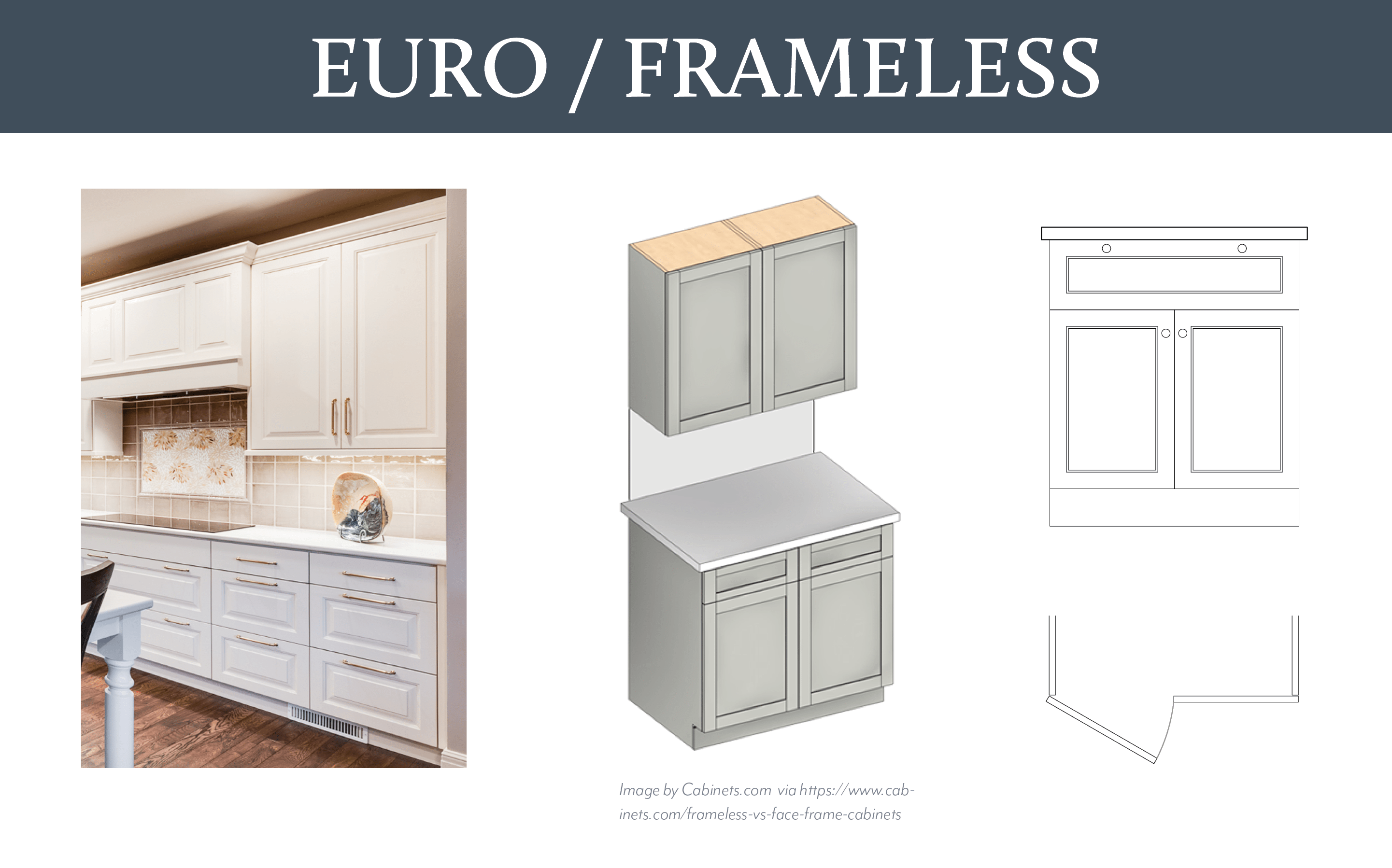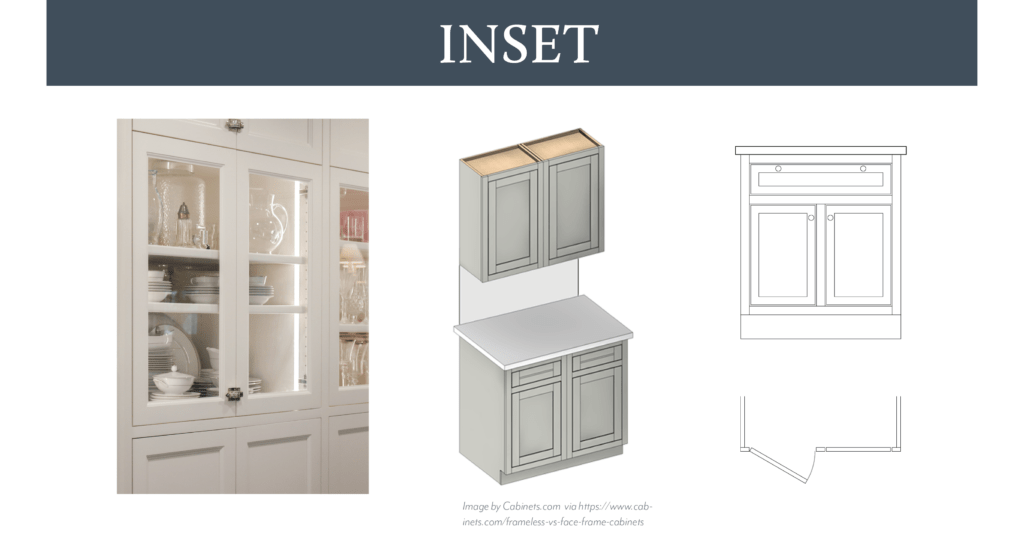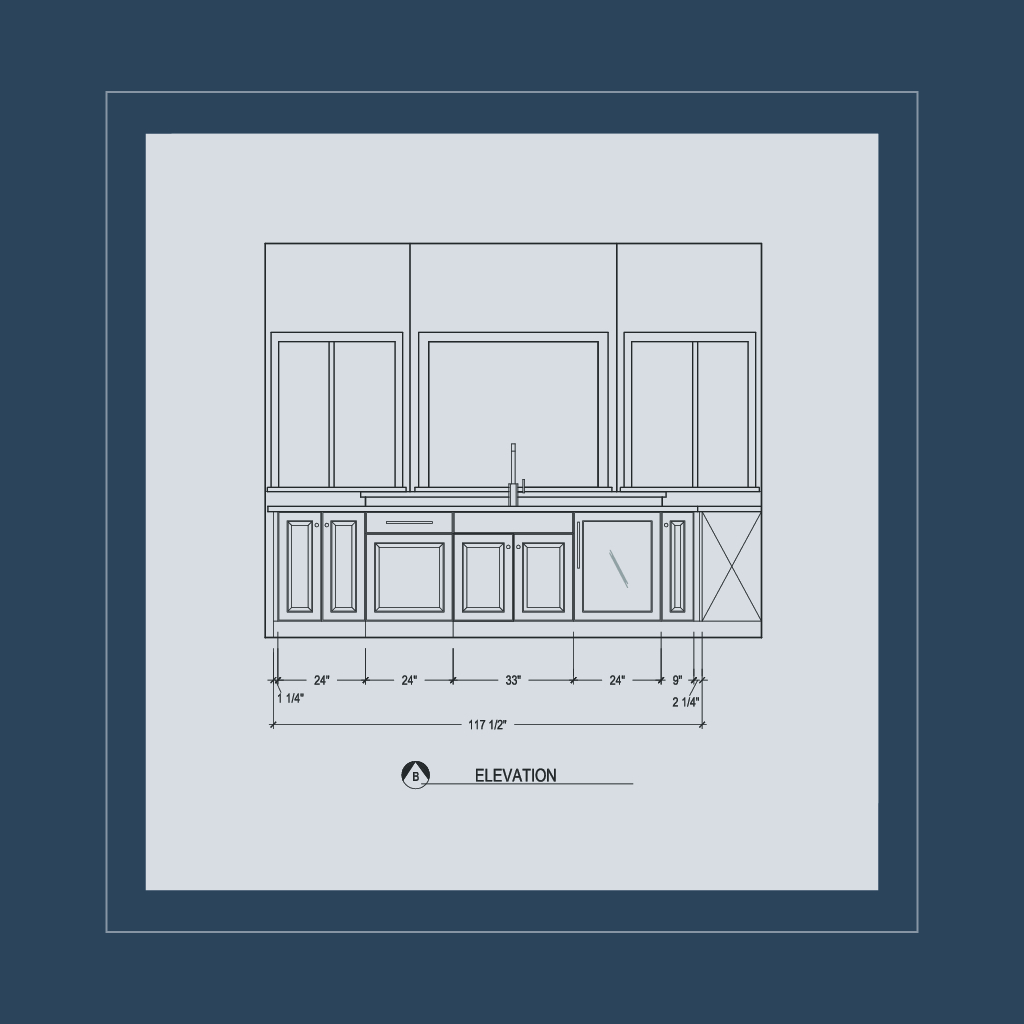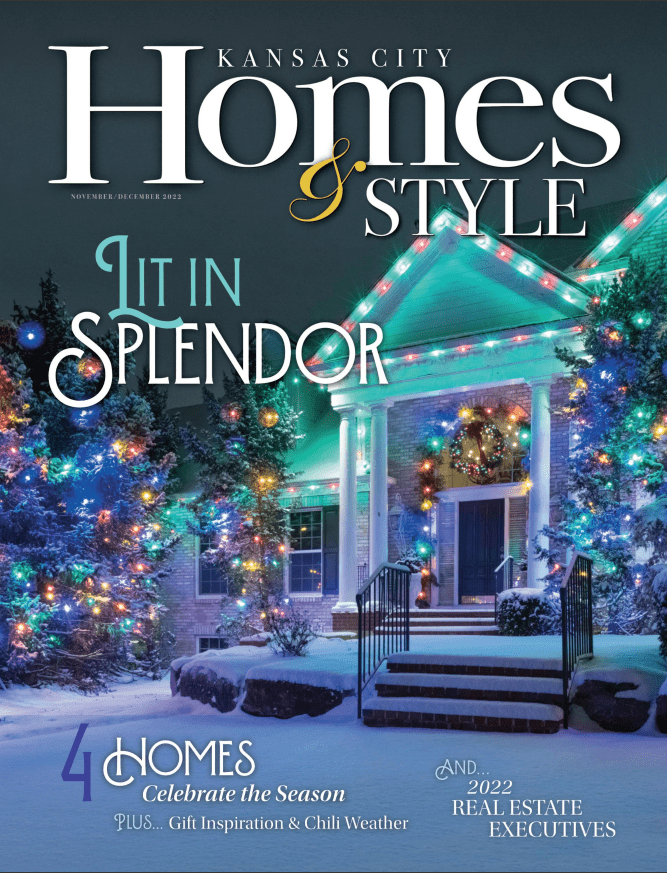A huge part of the design process is cabinetry. Cabinets are the base point of the aesthetic and feel of your kitchen or bathroom; and many people do not know that there are many variations of cabinet construction to choose from. Typically in our design development phase here at Orion Design, we will have a meeting with clients and go over the way in which they will use the storage, what style of door they want, and what material or color they prefer. This is an area where we like to get very excited about, teaching clients about the cabinets that will go in their homes, and how the builder will make them. We’ll touch base on the four main construction methods that we specify and provide a photo of a completed project with that particular style. Now let’s get into it!

Standard overlay cabinets are composed of a base box and a face frame attached to the front of the cabinet. If you think about a box, each side is constructed of a piece of plywood or hardwood that is ¾ of an inch thick; this is the base of your cabinet. Applying a face frame creates a more traditional look to your cabinetry, perfect, if that is the look you are trying to achieve. The face frame is not necessary for structure and or support. With a standard overlay, the door to your cabinet will cover ½” to ¾” of the frame. This creates a small overlap of the door and face frame but does leave a gap between the doors and drawer fronts. Standard Overlay cabinets are the most economical selection when it comes to choosing a style for your design.

Full overlay cabinets are a cleaner and more modern look yet can be designed to have a traditional feel. This style of cabinetry achieves the seamless look of a European Frameless cabinet instead with the same construction method of a standard overlay cabinet base. A face frame will still be attached to the front of the base box, however, the doors to the cabinet will fully overlap and cover the face frame. This gives the appearance of there being no face frame. Full Overlay cabinets are more expensive compared to a standard overlay cabinet, but appear to have the construction of a frameless cabinet. You do not gain the storage benefits of going with the Euro / Frameless cabinet but you do get closer to the look.

European Frameless cabinets can vary in the look and design from extremely modern to a traditional style. They are simple in the required pieces needed for construction. Take away the face frame from a standard or full overlay cabinet, and you have the pieces for a frameless cabinet. The draw to Euro / frameless cabinets is the full utilization of the interior compartments giving you more storage When a face frame is added to a cabinet, you lose however much that frame cuts into the cabinet. For instance, if you have a 30” wide cabinet with a frame you are only getting 25 ½” inches of that interior width because the frame occupies the rest of the space. With Euro / frameless on a 30” wide cabinet you are only losing the width of the ¾” box construction on either side, allowing you to use 28 ½” of the interior. This same math applies to the height of the drawer storage as well. Doors for this cabinet construction fully cover the box, creating a seamless front. This cabinet construction is typically a more expensive option. The expense comes in the precision needed in the construction. This is admittedly the preferred cabinet construction type for the Orion Design team but we do understand that this may not always be an option for our clients.

Inset cabinets are about as traditional as one can get. There is still a face frame that is attached to the box construction, however instead of the cabinet doors fully overlapping and covering the frame, they sit within the frame. This creates a flush and seamless look to the front of your cabinet, leaving a small reveal between the edges of the door and the face frame of the cabinet. Inset cabinet construction will be one of the more expensive options out of the four offered. You also need to be careful to keep a consistent interior environment as large variations in temperature and humidity in the space can cause the cabinet doors to swell and can cause rubbing against the frame.




